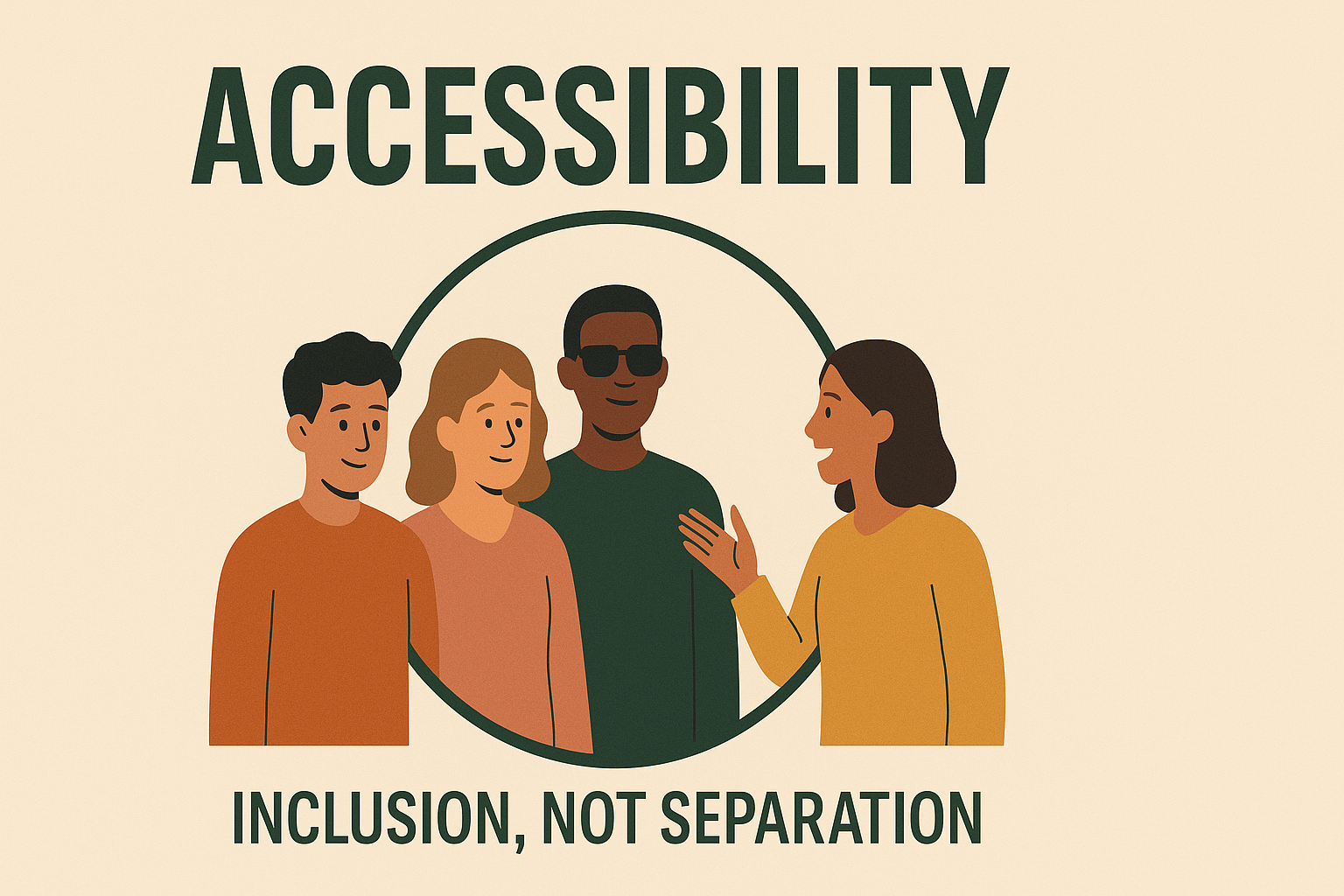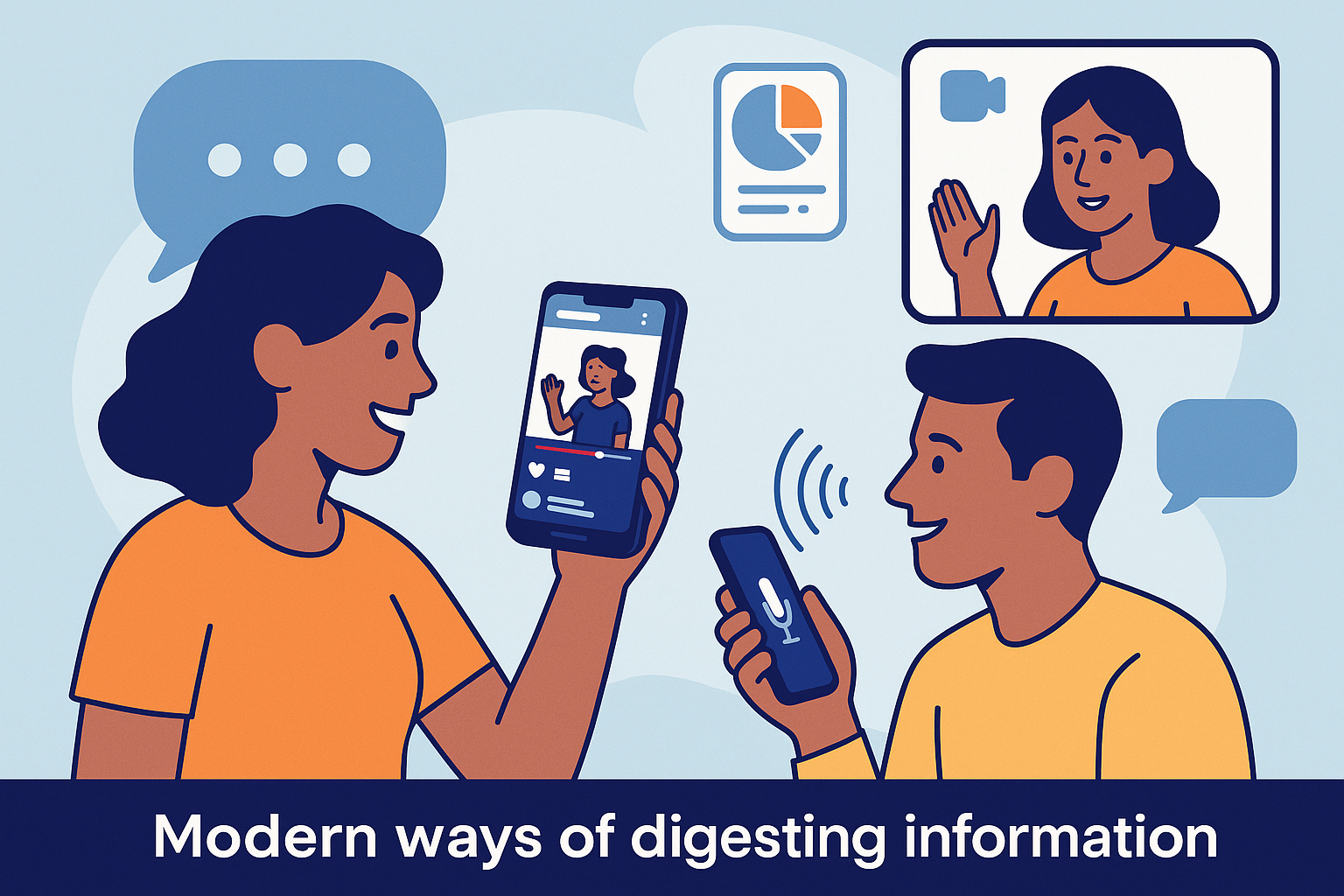Too often, accessibility is treated as a separate process or special accommodation. If a client has difficulty reading or understanding a document, organizations might offer an alternate version or a helper – but only if the client admits they need it. This approach leaves many people behind. Why? Because most people who struggle won’t announce it. In fact, many adults are reluctant to admit to literacy difficulties or ask for help (literacytrust.org.uk). Low literacy is a hidden challenge – about 1 in 6 adults in England, for example, have “very poor” literacy skills (literacytrust.org.uk). Yet embarrassment or fear of judgment means those individuals rarely self-identify as needing a different reading level. The result: they get the same dense document as everyone else, without the support they truly need.
- The hidden barriers to understanding legal information
- True accessibility lowers the bar for everyone
- One inclusive process (not two)
- Better outcomes for users and organisations
- Leading the way with inclusive design
The hidden barriers to understanding legal information
It’s not just low literacy. Numerous “hidden” barriers prevent people from understanding complex legal information (linkedin.com). Consider a few examples:
-
Language barriers: In the UK, over 7% of the population doesn’t speak English as their main language (consentkit.com). Many will nod along rather than admit they’re confused by an English-only form.
-
Neurodivergence and learning differences: Conditions like dyslexia (which affects roughly 1 in 10 people (consentkit.com)) or ADHD can make parsing long, text-dense documents difficult. These are often invisible disabilities – people may not disclose them to you (linkedin.com).
-
Lack of legal knowledge or confidence: Legal jargon and formal documents intimidate even highly educated people. Traditional contracts assume a very high reading level and familiarity with legal terms, which excludes many users by default.
The status quo thus creates a gap. We presume that those who can’t keep up will use an “accessible” alternative. But in reality, the alternative path is often underutilized or ineffective. Many organisations don’t even offer simplified versions of contracts – and when they do, only a tiny fraction of companies make those versions readily available (vice.com). One landmark analysis of 500 popular websites found over 99% of their user agreements were “unreadable,” far above the level most adults read at (vice.com). The average terms-of-service was written at a level comparable to an academic journal, requiring more than 14 years of education to fully comprehend (vice.com). It’s no wonder that, according to Pew Research, only about 9% of adults actually read online terms and policies before clicking “I agree” – the rest skip it, largely because the content is too long and complex (socialmedialab.ca). All of this indicates a serious problem: our current way of communicating legal information is leaving people out.
True accessibility lowers the bar for everyone
“Accessibility” shouldn’t be an afterthought or a separate channel – it should be the way we do things for everyone. As one accessibility advocate put it, many challenges like low literacy or neurodivergent thinking are “hidden disabilities,” and when a product or process is accessible, it’s inherently inclusive, benefiting everyone (linkedin.com). In other words, supporting vulnerable or less-skilled users isn’t about giving them a different experience – it’s about designing the main process to include everyone by default. This is the core of inclusive design.
Think of the physical world’s “curb cut effect.” Cities originally added curb ramps for wheelchair users, but then everyone started using them – people with strollers, luggage, bicycles. When you design for those with additional needs, you make things better for everyone in the process (uxdesign.cc). The same principle applies to legal and business communication. If we simplify language, add helpful visuals, and break down information for those who need it, everyone – not just the “vulnerable” – benefits. Busy professionals appreciate clarity. Non-native speakers grasp terms more quickly. Even highly literate users won’t complain if an agreement is easier to understand! Lowering the comprehension barrier raises the understanding of all participants.
One inclusive process (not two)
What does an inclusive consent or agreement process look like? It means building understanding into the primary workflow, rather than bolting it on afterward. For example, instead of handing out a dense 10-page contract and waiting to see who asks for help, an inclusive process might:
-
Use plain language and explanations – Jargon is minimized, and key terms are defined in simple terms right alongside the legal text. This way, no one needs a law degree to follow along.
-
Employ multiple formats – Not everyone learns best through text. The process can include a short video summary of the agreement, so users get a high-level overview in a conversational way. Visual and auditory explanations reinforce the written content.
-
Integrate interaction and feedback – Rather than a passive “scroll and sign,” the interface can ask brief questions or use interactive prompts to confirm understanding. For instance, clients might answer a quick quiz or even give a verbal confirmation of key points, recorded via a quick selfie video. This turns a one-way disclosure into a two-way conversation.
-
Offer support discreetly – Within the standard flow, users could click a help icon next to a confusing paragraph, or access a “plain-English guide” at any point. They might also have the ability to ask questions right in the interface and get clarifications. Importantly, these aids are available to everyone, quietly and without stigma. The user who needs it can take it; the one who doesn’t can skip ahead.
-
Provide multi-language options and accessible design – If your clients include non-native speakers, let them easily switch the content to another language. If someone has dyslexia, offer a dyslexia-friendly mode (e.g. different font or background color) as a built-in toggle (consentkit.com) (consentkit.com). These features should be part of the main product – not special accommodations that require separate requests.
All of these elements “bake in” accessibility from the start. They ensure that the default experience is usable and clear to as broad a range of people as possible. Nobody is singled out as needing extra help; the process itself flexes to meet different needs. When done right, “inclusion isn’t a feature, it’s the foundation” of the entire approach.
Crucially, this approach also eliminates the risk that someone quietly falls through the cracks. If a client with limited literacy can complete the same consent flow as a lawyer – and both truly understand it – you know you’ve achieved real accessibility. And you didn’t have to ask that client to reveal a private weakness or take a different path; you met them where they are.
Better outcomes for users and organisations
Designing a single, inclusive process isn’t just a noble idea – it produces tangible benefits for all stakeholders. Users, for one, have a far better experience. Instead of frustration or confusion, they feel empowered and respected. They know what they’re signing and can make truly informed decisions. This builds trust. Clients are more likely to engage with services and less likely to be surprised by “fine print” they didn’t catch. In an era of low attention spans, giving people an easier way to understand information also means they’re more likely to actually complete the process rather than give up halfway (consentkit.com).
For organisations (particularly in legal, financial, or regulatory fields), an inclusive process greatly reduces risk. If ever a dispute arises about whether someone “understood what they agreed to,” you have strong evidence that your process was clear and supportive. By embedding comprehension checks and aids into the flow, you make the agreement more defensible – you can show that every user had a fair chance to understand the terms. Compare that to a signed PDF contract full of legalese: it’s much harder to prove the client actually grasped it. Regulators have started to notice this distinction. From the UK Financial Conduct Authority’s new Consumer Duty rules to legal ethics guidelines, there’s a clear shift towards expecting firms to ensure customer understanding – not just collect signatures. GDPR, too, defines valid consent as informed and unambiguous, putting the onus on businesses to communicate terms in an intelligible form. The writing is on the wall: organisations must move beyond “tick-box” consent and demonstrate real clarity. Old tools (long static documents and unreadable fine print) simply can’t meet that bar. New, inclusive methods can.
Finally, making your process accessible to all is simply good business. When people actually comprehend what they’re agreeing to, they are more comfortable proceeding. You widen your potential client base because fewer people are alienated or excluded. It’s persuasive in itself – a client who understands your terms is more likely to sign on, and feel good about it, than one who feels overwhelmed and uncertain. As an added bonus, the innovations that improve accessibility often streamline the process for everyone. Short videos, plain language summaries, interactive forms – these tend to speed up decision-making for the “average” user as well. It’s a win-win: better user experience, better compliance, and often faster completion. No one is stuck in a slow separate queue; all users move through a single efficient funnel designed for clarity.
Leading the way with inclusive design
The key takeaway is that true accessibility is about inclusion, not segregation. Rather than two versions of a journey – one “normal,” one “accessible” – aim for one journey that works for all. This mindset shift is at the heart of modern accessibility and digital transformation in the legal field. Forward-thinking organisations are already embracing it. For example, new digital consent platforms like i agree have reimagined the traditional contract signing process to make it clearer, safer, and more human. They leverage videos, guided walkthroughs, and even selfies as verification, all within a single flow that any user can navigate. The result is an experience where “vulnerable clients are no longer excluded – the process is simple for all users”
By prioritizing understanding over mere formality, you signal that every client’s consent truly matters. You’re not asking people to trust you blindly or sort themselves into “able” vs “needs help” categories – you’re earning their trust by being transparent and inclusive from the start. This is the essence of accessibility as thought leadership: it challenges the status quo of dense fine print and passive agreement. It says we can do better, and in doing so, we carry everyone forward together.
In conclusion, making your services accessible in this holistic way isn’t about compliance checkboxing or PR – it’s about fundamentally improving how we communicate. It’s about lowering the bar to entry so that everyone can step over it. When you include everyone in the current process, you don’t just meet the minimum standard; you create a higher standard of client care. You’ll know you’ve succeeded when no one needs to be singled out or shunted aside – when every person can confidently say “I agree” and truly understand what it means. That’s the future of accessibility, and it’s better for everyone involved.
Ready to try it?
Explore how  i agree can help you create contracts people actually understand.
i agree can help you create contracts people actually understand.
Check out our FAQ or try our demo to see how it works
Sources: Supporting stats and quotes drawn from research on literacy and inclusive design literacytrust.org.uk literacytrust.org.uk consentkit.com (linkedin.com, industry analyses of readability vice.com vice.com socialmedialab.ca These illustrate the critical shift toward accessibility as a unified, inclusive process.




